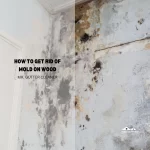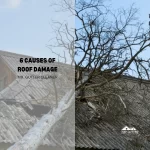A roof inspection checklist serves as a fundamental tool in home maintenance, enabling homeowners to thoroughly understand and effectively manage the condition of their roof. This checklist is a comprehensive guide that outlines critical components of the roof that require inspection, aiming to identify potential issues before they escalate into significant damage.
Regular roof inspections are essential, as they prevent major damage through early detection, thereby extending the lifespan of the roof. Homeowners should schedule inspections at optimal times of the year, notably before and after severe weather seasons, and also when signs indicate immediate attention is needed.
The inspection process involves a detailed examination of both the roof’s exterior and interior. On the exterior, key elements such as shingles, flashing, and gutters are inspected for potential issues. Inside the home, the attic is checked for signs of moisture, mold, and insulation problems.
Understanding the roof inspection report is crucial for homeowners, as it helps interpret the findings and prioritize necessary repairs. Regular maintenance, based on the insights gained from the inspection, can significantly extend the roof’s life.
This introduction not only contextualizes the significance of a roof inspection checklist within the broader scope of home maintenance but also sets the stage for a deeper exploration of each sub-topic, ensuring a linear and informative progression through the document.
What is a Roof Inspection Checklist?
A Roof Inspection Checklist is a detailed guide used by homeowners and professionals to assess the condition of a roof systematically. This tool lists essential aspects of the roof that need to be reviewed to maintain its optimal function and longevity. It includes inspecting roofing materials, structural elements, and drainage systems to identify any signs of wear, damage, or potential failure.
Defining the Roof Inspection Checklist
The checklist serves as a comprehensive evaluation framework, detailing critical points such as shingles, tiles, gutters, downspouts, flashing, and attic spaces. Each item on the list is examined for signs of aging, damage, or improper installation. This thorough approach ensures all potential problems are identified, allowing for immediate remediation to prevent further damage to the home.
Table of Contents:
- What is a Roof Inspection Checklist?
- Why Regular Roof Inspections Are Crucial for Home Maintenance
- When to Schedule a Roof Inspection
- Inspecting the Roof's Exterior
- Inspecting the Roof's Interior
- Understanding Your Roof Inspection Report
- Regular Maintenance Tips to Extend Roof Life
- When to Hire a Professional Roof Inspector
The Importance of a Roof Inspection Checklist in Home Maintenance
Incorporating a Roof Inspection Checklist into regular home maintenance is crucial for several reasons. Firstly, it facilitates early detection of minor issues before they escalate into significant, costly repairs. Regular inspections extend the roof’s lifespan by ensuring that it remains in good condition, protecting the home from water damage, pests, and mold growth. Additionally, a well-maintained roof contributes to the home’s overall energy efficiency by ensuring proper insulation and ventilation, ultimately saving homeowners on energy costs. This checklist is an indispensable tool for maintaining the structural integrity and functionality of a roof, safeguarding the home and its occupants.
Why Regular Roof Inspections Are Crucial for Home Maintenance
Regular roof inspections are a cornerstone of diligent home maintenance. These inspections not only ensure the longevity of the roof but also protect the overall structure and interior of the home from potential damage. By identifying and addressing minor issues early, homeowners can avoid extensive and costly repairs in the future.
Preventing Major Damage Through Early Detection
Early detection of minor roof issues, such as small leaks, missing shingles, or minor wear and tear, can prevent these problems from escalating into major damage. Regular inspections help in spotting these issues before they lead to significant water damage, structural problems, or costly energy inefficiencies. This proactive approach saves time, money, and stress, ensuring the home remains safe and well-protected.
Extending the Lifespan of Your Roof with Regular Inspections
The lifespan of a roof depends significantly on how well it is maintained. Regular inspections and maintenance work to preserve the integrity of roofing materials and structural components, extending the roof’s lifespan. By addressing wear and tear promptly, homeowners can delay the need for a full roof replacement, which is both costly and time-consuming.
When to Schedule a Roof Inspection
Knowing when to schedule a roof inspection is key to maintaining your roof’s health and extending its lifespan. Inspections should be part of a routine maintenance schedule and also after any significant weather event that could have caused damage to the roof.
Optimal Times of Year for Roof Inspections
The best times to schedule roof inspections are in the spring and fall. These seasons provide moderate weather conditions, making it easier to identify potential issues caused by the harsh weather in summer and winter. Spring inspections can reveal damage from winter storms, while fall inspections prepare the roof for potential snow and ice accumulation.
Recognizing Signs That Your Roof Needs an Immediate Inspection
Certain signs indicate the need for an immediate roof inspection, regardless of the time of year. These include visible sagging, missing, broken, or curling shingles, noticeable leaks inside the home, and damaged flashing. Additionally, if the roof has endured severe weather conditions like heavy snowfall, hailstorms, or high winds, an inspection should be scheduled promptly to assess and mitigate any damage.
Inspecting the Roof’s Exterior
Inspecting the roof’s exterior is a critical step in assessing its overall health and integrity. This process involves examining various components to ensure they are in good condition and functioning correctly. Such inspections can pinpoint areas that may need repair or replacement, ultimately protecting the home from water intrusion and other damage.
Key Elements to Inspect on the Roof’s Exterior
When inspecting the roof’s exterior, focus on key elements including shingles, flashing, gutters, and downspouts. Look for cracked, missing, or damaged shingles that can allow water to penetrate the roof. Flashing around chimneys, vents, and roof joints should be intact and without signs of rust or separation. Ensure gutters and downspouts are securely attached, free of debris, and draining properly to prevent water buildup on the roof or around the foundation.
Identifying Potential Issues with Shingles, Flashing, and Gutters
Identifying issues early with shingles, flashing, and gutters can prevent major damage. Look for shingles that are buckling, curling, or blistering, as these signs indicate wear and potential leaks. Flashing should be checked for gaps or signs of deterioration, which could lead to water damage inside the home. Gutters need to be clear of obstructions and properly aligned to ensure water is effectively diverted away from the roof and foundation.
Inspecting the Roof’s Interior
The interior inspection of the roof, particularly the attic, is just as important as the exterior examination. It provides insight into issues that might not be visible from outside, such as leaks, moisture accumulation, and insulation problems. This step is vital for identifying problems that could lead to energy loss, water damage, and reduced air quality inside the home.
What to Look for Inside Your Attic
Inside the attic, look for signs of water penetration such as staining on the underside of the roof decking or on insulation. Check for adequate ventilation, as poor air flow can lead to moisture buildup and contribute to mold growth. Insulation should be evenly distributed and in good condition to maintain the home’s energy efficiency.
Signs of Moisture, Mold, and Insulation Problems
Moisture in the attic can lead to mold growth, which poses health risks and can compromise the structural integrity of the roof. Look for musty odors, visible mold on wood surfaces, or discolored insulation. Insulation problems, such as gaps or compression, can reduce the home’s thermal efficiency, leading to higher energy bills and uneven temperatures throughout the home. Identifying and addressing these issues promptly can help maintain a healthy, efficient, and safe living environment.
Understanding Your Roof Inspection Report
After a thorough roof inspection, understanding the detailed report provided is crucial for maintaining the roof’s condition. This report outlines the current state of your roof, highlighting any concerns or potential issues that need attention. It serves as a guide for taking the necessary steps to ensure the longevity and functionality of your roof.
Interpreting the Findings of a Roof Inspection
Interpreting the findings involves reviewing the inspector’s notes on any signs of wear, damage, or potential failure points. The report should categorize issues by their urgency, noting anything that requires immediate action versus observations that should be monitored over time. Understanding the scope of each problem, from minor cosmetic issues to major structural concerns, is essential for making informed decisions about repairs.
How to Prioritize Repairs Based on the Inspection Report
Prioritizing repairs starts with addressing any critical issues that pose immediate risks to the roof’s integrity or the home’s interior, such as leaks or significant structural damage. Next, tackle problems that could deteriorate quickly if left unattended. Plan for routine maintenance and lesser repairs to prevent future issues, allocating your budget to ensure the most pressing concerns are resolved first.
Regular Maintenance Tips to Extend Roof Life
Regular maintenance is key to extending the life of your roof. Simple, consistent care can prevent many common roofing problems, saving you time and money in the long run. By following a few maintenance tips, you can help ensure your roof remains in good condition year after year.
Simple Maintenance Steps for Homeowners
Homeowners can perform several simple maintenance steps to keep their roof in top shape. These include regularly cleaning gutters and downspouts to prevent water buildup, trimming tree branches that could damage the roof in strong winds, and conducting visual inspections to spot early signs of wear or damage. Also, ensure attic ventilation is adequate to prevent moisture accumulation and heat buildup.
Preventative Measures to Minimize Future Roof Issues
Preventative measures include applying sealant around flashing and vents to prevent leaks, inspecting and repairing minor issues promptly before they become major problems, and ensuring your insulation and ventilation systems are functioning correctly to avoid ice dams in winter. Regular professional inspections can also catch issues that may not be visible to the untrained eye.
When to Hire a Professional Roof Inspector
While homeowners can perform basic maintenance and inspections, there are times when hiring a professional roof inspector is necessary. These experts can provide a comprehensive evaluation of your roof’s condition, offering peace of mind and expert advice on maintaining your roof.
The Benefits of Professional Evaluation
A professional evaluation offers several benefits, including identifying potential issues that may not be apparent, providing expert recommendations for repairs or maintenance, and helping to extend the roof’s lifespan through targeted interventions. Professionals have the tools and knowledge to conduct thorough inspections safely, ensuring every aspect of the roof is examined.
Tips for Choosing a Reliable Roof Inspection Service
When selecting a roof inspection service, look for licensed, insured, and experienced professionals with positive reviews and references. Consider companies that specialize in your type of roofing material and ask about the scope of their inspection and what is included in their report. A reputable service should provide a detailed inspection report and offer clear communication about any recommended repairs or maintenance.


